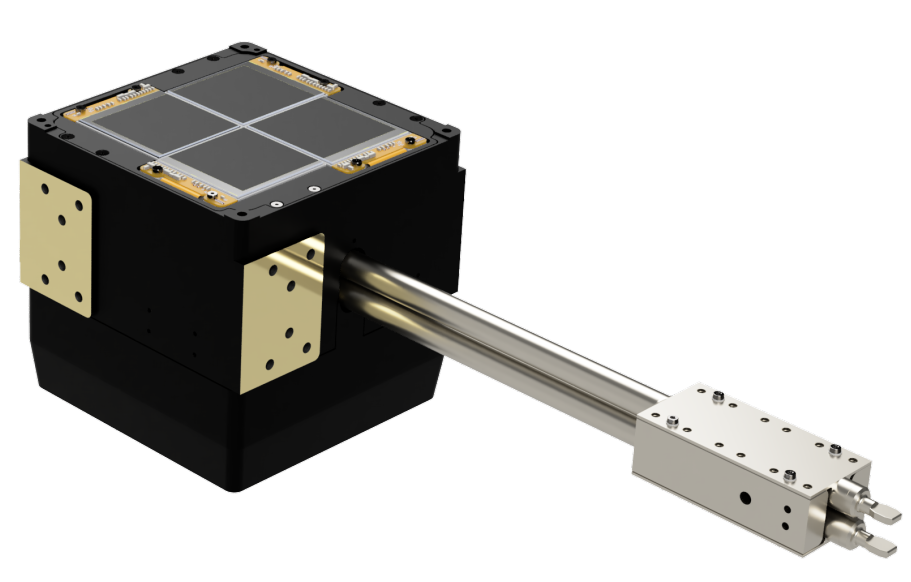The focal plane array (FPA) is composed of four independent Backside Illumination (BSI) CMOS sensors with an effective area of ~45x45mm each, providing full graceful degradation. Each sensor array has 22,450K pixels, 9.5x9.5μm each. A high-K dielectric layer and a UV-optimized Anti Reflection Coating (ARC) allows to achieve the high Quantum Efficiency (QE) required in the ULTRASAT waveband (Figure 4.2).
Detecting low flux, which is necessary for the mission, sets a strong requirement on dark noise of DN<0.026 e-/sec/pixel. This is achieved by operating at 200oK, using advanced pixel architecture, in combination with low noise design. The camera is mounted on a spider arm assembly within the telescope tube, thermally isolating the FPA (at 200oK) from the telescope structure (kept at 293oK). The instrumental camera noise (dark current, read noise, cross talk) contribute less than 20% to the background noise variance.
The camera has no shutter, and it is read in a "rolling-shutter" mode that allows continuous exposures with minimal overhead time (~2 msec). The entire pixel array is read in less than 20 sec. High Dynamic Range (HDR) capability is achieved by dual gain 4T pixels. The processing technology also includes stitching and optical trenches placed between the imager array and the surrounding circuitry. The design employs several techniques for mitigating space radiation effects such as TID and SEL, enabling operation in GEO for more than 7 years (longer than the kinematic mission lifetime).

Figure 4.1: The Focal plane array

Figure 4.2: ULTRASAT detector QE. The angle of incident distribution changes across the FOV, resulting in slightly different QE.
| Property | Value | Comments |
|---|---|---|
| Pixel size | 9.5 μm | |
| Total pixel count | 89.8 M | Composed of 4 sensor arrays |
| Mean QE | >0.6 | In operation band (230-290 nm) |
| Read noise | < 3.5 e- | |
| Dark current |
<0.026 e-/s/pix |
